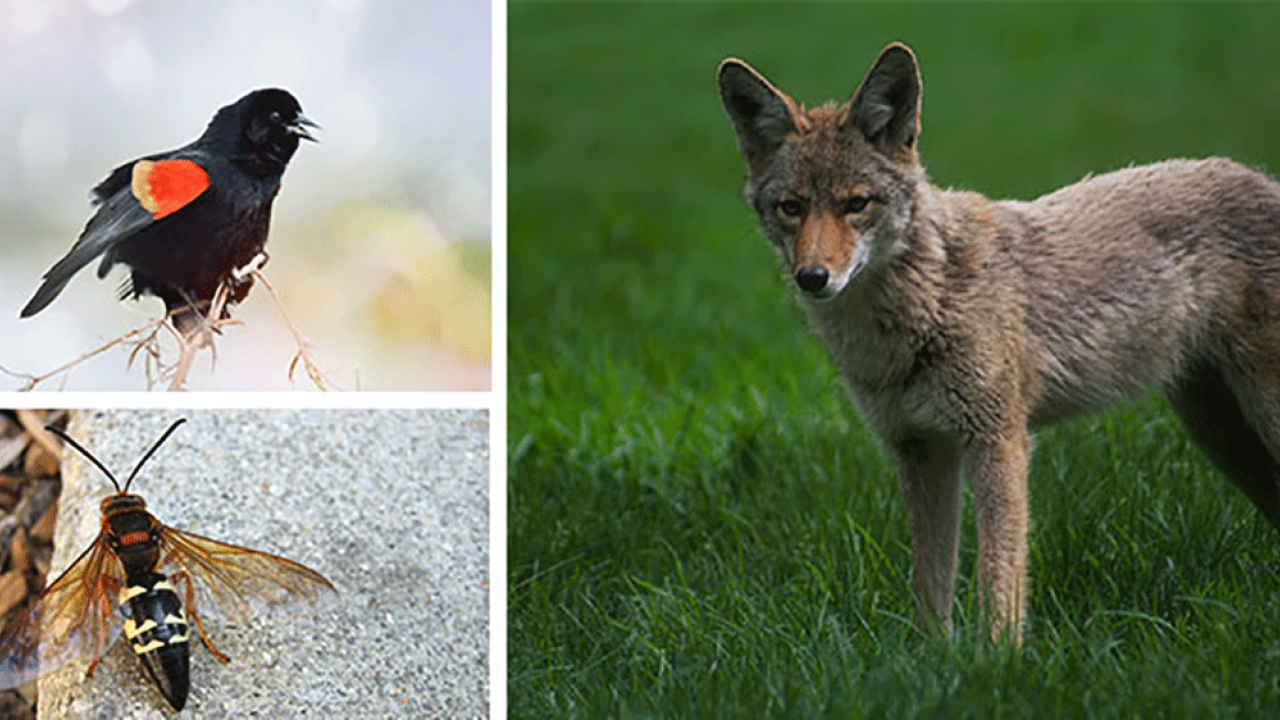While exploring Elmhurst's parks, please be aware of the local animals which you might encounter.
Bee Boxes/Hotels
If you are near the bee box in Berens Park or along the Illinois Prairie Path please do not disturb the bees.
Contrary to popular belief, a majority of bees are not harmful. Everyone just gets stung once or twice and fears them for the rest of their life. But over 90% of bees are solitary bees, which means they don’t sting. They also don’t build hives. The ones that do are social bees or wasps, and are a smaller percentage, as the 10% of non-solitary bees also includes bumblebees, which do not build hives or sting either.
Bees are important pollinators, and pollinate over 75% of all plants that require it. Other bugs can pollinate also, but not nearly as well. And beyond that, solitary bees pollinate 80 times better than honey bees. It takes 250 mason bees to pollinate a field that may take 3 hives -- almost 20,000 honey bees -- to pollinate. Solitary bees don’t make hives, don’t sting and pollinate better than honey bees.
These bees still need a little help. If you go to Berens Park, you can see a “bee box” by the eastern parking lot. This box is in fact not a box. The “bee box” is a large wooden structure with hundreds of holes in it. These holes provide a place for solitary bees to lay their eggs, and thus bring better pollination to the area. Any aesthetic modifications to the box are just to make it look nicer, and any design will do.
These bees are important pollinators. Currently, many commercially pollinating honey bees are suffering from Colony Collapse Disorder, which lead to many crops being lost. People are looking into using these native bees to pollinate. This box is a place to help them grow their sizes and become prominent.
We ask that if you are near a box, do not disturb the bees. They are laying their eggs so that the bee population will continue to increase, and thus increase the natural environment around them, and around us. Just remember, not all bees are bad. Especially not the ones here!
Bee Box information courtesy of Nathan Moskal, who created a Bee Box for the Illinois Prairie Path and provided educational information as part of his Eagle Scout Project.
Cicada Killer Wasp
“Cicada Killer” wasps (Sphecius speciosus) can be seen in the dry sandy areas at some of Elmhurst's parks during the late summer season. While they are relatively harmless, their presence may alarm park visitors. They are ground-burrowing insects that are present in a given area for 60 to 75 days, usually until mid-September. The best course of action is to stay clear of these wasps should you encounter them.
Coyote
Over the past few years, coyotes have increasingly been spotted in urban areas around Chicago, including the western suburbs. If you see a coyote there is no need for alarm, coyotes rarely attack humans. However, if you are approached by a coyote:
- Be as BIG and LOUD as possible; use arm gestures to exaggerate your size and voice.
- Always keep your pet on a leash; if you see a coyote, you should pick up your small dog and keep large pets on a short lease and close to you.
- Keep small children near you.
- Throw objects (not food) at the coyote.
- Slowly move toward a place with people, but do not turn your back to the coyote. There is no need to run.
Red-Winged Blackbird
The red-winged blackbird is one of the most common and abundant birds in North America. They are fierce defenders of their nests, harassing all those that come close. Though smaller than the American robin, they will think nothing of harassing hawks, crows and other large birds that pass over and will commonly escort humans away by hovering close and making angry calls.
The red-winged blackbird can be found throughout the Elmhurst community and, in the past, some have been reported to exhibit aggressive behavior in Eldridge Park and along the Illinois Prairie Path.



